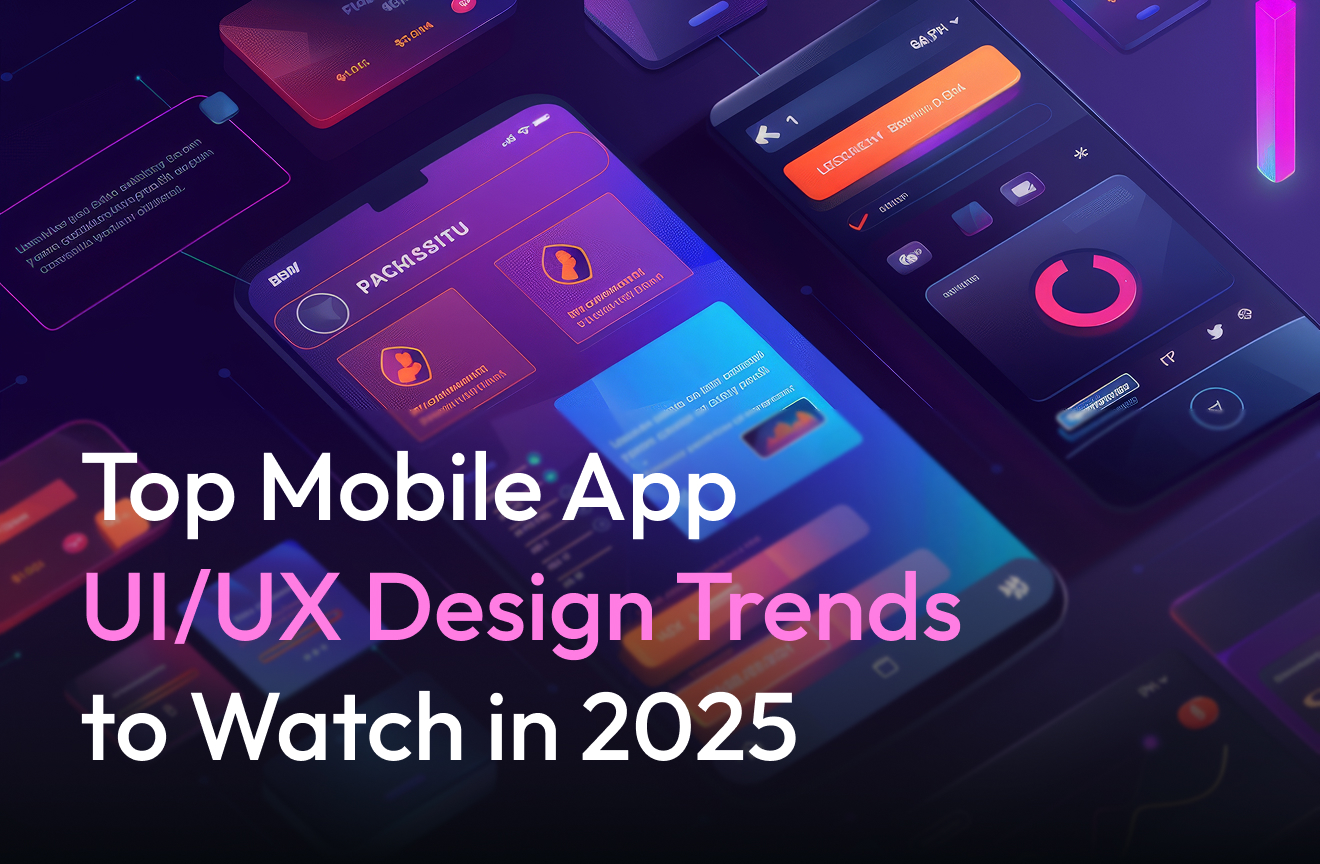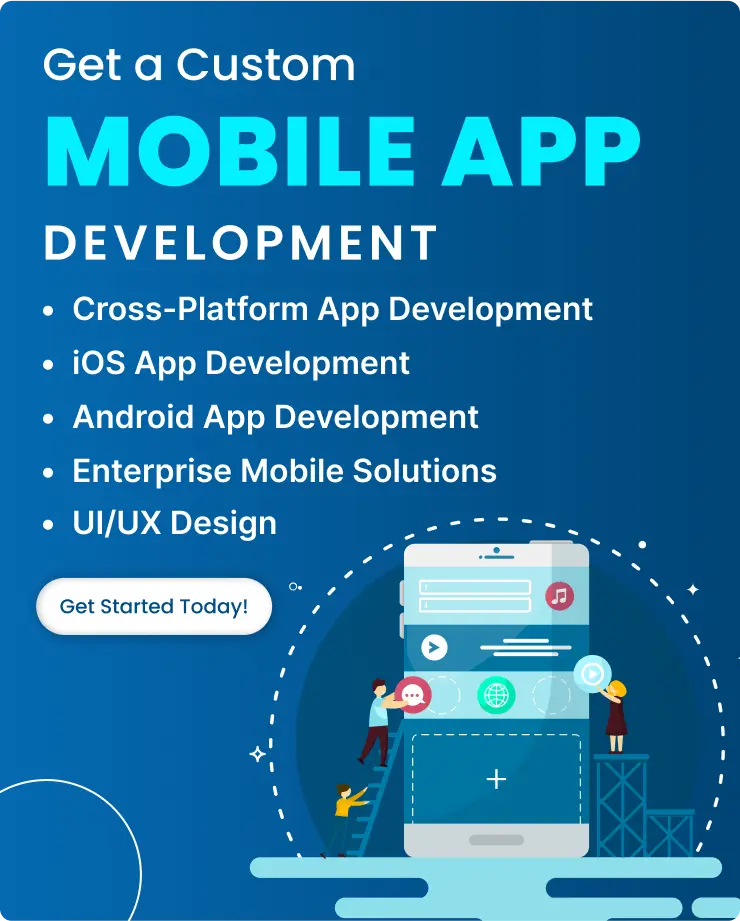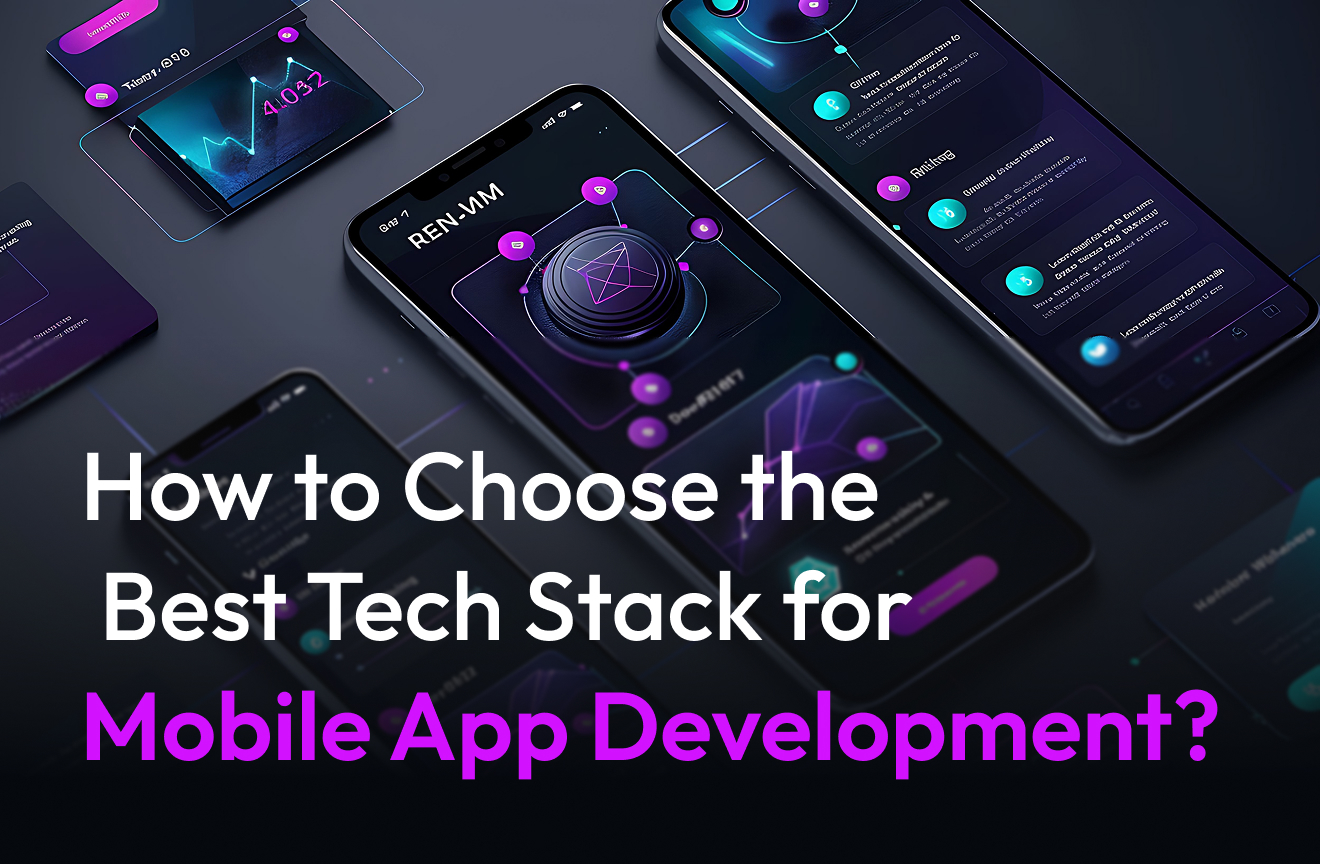Mobile app UI/UX design trends are changing with technology, user expectations and new philosophies. With the onset of 2025, UI/UX designers need to stay ahead of the curve to make seamless, engaging and beautiful experiences. Future trends, from AI-powered personalization to augmented reality (AR) powerhouses are prepared to transform how users interact with mobile applications. Let’s take a look at the top mobile app UI/UX design trends for 2025.
1. AI-Powered Personalization
AI has been changing the face of UI/UX design for some time now, but we will see even more flawless use of AI-driven personalization in 2025. Through machine learning algorithms, apps will process users behaviour and favourites as well as interactions and will provide them individualized experiences instantly. This trend will enable businesses to enhance engagement, optimize conversions and offer users a fully personalized experience. AI-powered chatbots and voice assistants will be transformed, identified by a greater intuition for user support, leading to effortless interactions.
2. Engaging Augmented Reality (AR) & Virtual Reality (VR)
Mobile apps will continue to deliver immersive experiences as AR and VR technology innovations. Be it shopping, gaming, real estate or education, AR and VR will succeed the way users engage with the apps. For example, users will be able to try on clothes or accessories virtually on e-commerce platforms and travel apps will include virtual tours of places to visit. Mobile app UI/UX Design with AR/VR Introduction Augmented and virtual reality will find new use in mobile app UI/UX design, allowing for a better user experience.
3. Super Apps: All-in-One Solutions
Regional Asian concept, super apps will be released worldwide in 2025. These applications offer a single platform integrating multiple single services such as messaging, payments, e-commerce and social networking. Super apps are more convenient for users as they save the trouble of switching back and forth apps, the business is going to follow this path and will give an ecosystem in the app itself to keep the users stick and this is going to be the big opportunity in mobile app development.
4. Minimalist & Neumorphic Design
The design style of Neumorphism, that combines skeuomorphism and flat design, will grow further in use in 2025. This is achieved using simple shadows, gradients and soft edges to create a semi-realistic, contemporary and usable interface. When paired with a minimalist UI, neumorphic design improves usability by providing useful feedback while making sure the interface stays clean and clutter-free. Applications will be simple, straightforward and easy to use for a seamless user experience.
5. Voice User Interface (VUI) & Conversational UI
Mobile applications are adapting to voice search and voice-enabled interaction. You will receive more and more voice-activated navigation in apps with the rise of virtual assistants such as Siri, Alexa and Google Assistant, minimizing reliance on traditional touch interfaces. Conversational UI, including chatbots and voice interactions, will improve accessibility and give users a more intuitive way of interacting with applications.
6. Dark Mode and Adaptive UI
In the previous years, dark mode has gained a lot of popularity and it will remain the reigning UI/UX design trend in 2025. Adaptive UI options, such as light and dark modes, will be provided by many apps that can change on their own by assessing the preference of a user or environmental lighting conditions. This addition increases user comfort, lessens eye strain and the battery life on OLED screens. Adaptive UI will also allow for seamless transitions between various devices & screen sizes.
7. Microinteractions & Dynamic Animations
Microinteractions are small touchpoints that create a raised awareness about the product and these will complement UI/UX design as well. These transitions can be visually compelling added to responsiveness and more concrete effects, thought-out animations lend feedback, guidance and intuitive use for the user experience. Smooth transitions and animations to visualize loading and button effects will contribute to a more dynamic user experience. Motion design will be used by designers for making mobile applications attractive and interactive.
8. Gesture-Based Navigation
Physical buttons are becoming obsolete as gesture-based navigation takes center stage. In 2025, most mobile apps are expected to give the option of gesture-driven interactions, enabling users to swipe, pinch or tap to complete various tasks. Gesture-based navigation provides a more immersive and natural experience with smoother and more efficient interactions with apps. This is going to take off particularly on bezel-less and foldable smart devices that maximize given screen space.
9. Biometric Authentication for Enhanced Security
Security is a top priority for mobile app users and biometric authentication is a feature that has become a must-have. By 2025, facial recognition, fingerprint scanning and voice authentication will be commonplace to improve our security and allow us to bypass annoying login procedures. So, this trend will facilitate users with a frictionless and secure experience and minimize the usage of legacy passwords, etc.
10. Hyper-Personalized Content & Adaptive Interfaces
Hyper-personalization will also be an important part of mobile app UI/UX design trends. Data analytics, AI and preferences will allow apps to provide information that will fit the user. And an adaptive interface which will customize layouts, fonts and themes as per users behaviour, thereby transcending into a completely unique and unforgettable experience. This is the right addition because it will be immensely helpful for news apps, streaming platforms and e-commerce applications.
11. 3D & Glassmorphism Design
In 2025, 3D elements and glassmorphism (a blurred frosted glass effect) will lead UI design trends. The inclusion of 3D icons, buttons and elements will make the mobile apps aesthetically pleasing and engaging. This glassmorphism with a blurred transparency and depth effects will not only give the look futuristic and elegant but also keeps the design user friendly and readable.
12. Sustainability & Eco-Friendly Design
An increasing focus on Sustainability in application creation Employee Well-Being a drastic change in work culture has now emerged post the quarantine and isolation period and the UI/UX designers of 2025 will be active contributors in this culture by infusing things to strive for a balance and welfare in the lifestyle. Techniques like dark mode, low-energy color schemes and efficient coding will bring us sustainable digital experiences.
13. Cross-Platform Compatibility
As the number of devices and operating systems enhances, cross-platform compatibility is still a very important issue that cannot be ignored. PWAs as well as frameworks like Flutter and React Native will encourage developers to construct seamless experiences across multiple platforms. This will allow users to switch seamlessly across devices while having a consistent UI/UX.
14. Inclusive & Accessible Design
Accessibility will continue to be at the forefront of UI/UX design and mobile apps will be made accessible for all, including the disabled. Things will include voice commands and screen readers allowing font size adjustment to suit the user as well as color contrast capabilities, etc. This not only enhances the usability of the app but also expands its audience to include a diverse range of users.
15. Blockchain for Secure Transactions & Data Privacy
As a large number of individuals are concerned about data security and privacy, mobile apps will adopt blockchain technology for achieving security. Users will be able to make secure transactions and utilize encrypted messaging and data protection features of decentralized applications (DApps). Blockchain-based identity verification will also enhance authentication processes, establishing a greater degree of trust and security.
Conclusion
The mobile app UI/UX design trends 2025 will revolve around personalization, immersion, security and accessibility as mobile technology advances. Artificial intelligence-powered interfaces, augmented and virtual reality experiences, age-based navigation and biometric authentication are just some of the trends that will define the next era of mobile applications. Mobile app designers and developers will have to watch out for these innovations to build the best-in-class, user-friendly, interactive and future-ready mobile apps. Incorporating these innovative trends into practices can improve user satisfaction, foster engagement and help businesses stay competitive in a rapidly evolving digital landscape.

Stay Up to Date
Get our newsletter

Table of Contents
Toggle- 1. AI-Powered Personalization
- 2. Engaging Augmented Reality (AR) & Virtual Reality (VR)
- 3. Super Apps: All-in-One Solutions
- 4. Minimalist & Neumorphic Design
- 5. Voice User Interface (VUI) & Conversational UI
- 6. Dark Mode and Adaptive UI
- 7. Microinteractions & Dynamic Animations
- 8. Gesture-Based Navigation
- 9. Biometric Authentication for Enhanced Security
- 10. Hyper-Personalized Content & Adaptive Interfaces
- 11. 3D & Glassmorphism Design
- 12. Sustainability & Eco-Friendly Design
- 13. Cross-Platform Compatibility
- 14. Inclusive & Accessible Design
- 15. Blockchain for Secure Transactions & Data Privacy
- Conclusion




